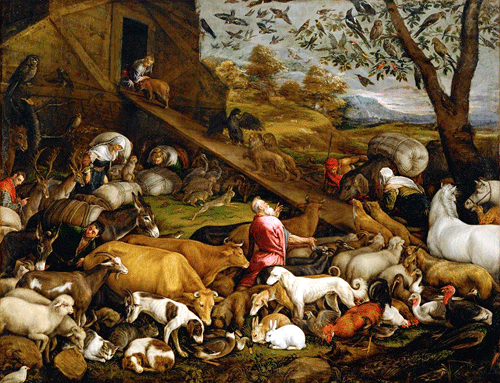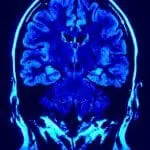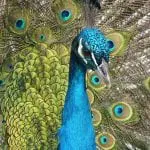The genetic code of living organisms is constituted of ultra-highly-specified coded information. This highly-specified nature of the genetic code of individual species is proven by the fact that virtually ALL genetic mutations are either harmful or lethal to the organism due to the degrading of the genetic information that mutations represent. This ultra-highly-specified nature of the genetic code of living organisms is also manifested by the fact that various species cannot mate with each other and produce offspring. Cats cannot reproduce with dogs. Horses cannot reproduce with giraffes. Rhinoceroses cannot reproduce with hippopotamuses, etc. Most of us who have spent any significant time around domestic cats and dogs have probably witnessed the spectacle of a dog “mating” with a cat at one time or another, yet not one person anywhere in the world can claim to have a brood of cute little cat-dogs or dog-cats scampering around his or her house. (This real-world fact should be the basis of our nomenclature and definition of the word “species.”) Why do we not see this blurring of the lines among living organisms? Why do we only see variations within breedable organisms but never any cross-over?
Random changes in the genetic code are precisely analogous to random changes in the characters of a book or a computer program. (See “Evolution: A Theory in Crisis,” by Michael Denton, Chapter 4: “A Partial Truth,” pgs. 79-92). Books, computer programs, and genomes are all information-bearing systems. The mathematical odds against obtaining a coherent result either in a book, or in a computer program, or in a living organism, by inducing random alterations in the punctuation, sentences, or paragraphs in a book, or the characters in a computer code, or the base pairs or sequences in a genome, are quite literally infinite.The base pairs of the genetic code are not like whores: not any old partner will do! It is not insignificant that very shortly after the nature of the genetic code as a double helix with long sequences of base pairs was determined, some of the first scientists to have doubts about Darwinian evolution based upon this information were mathematicians such as Murray Eden and Marcel Schutzenberger.
Consider, for example, what will happen to the novel “Moby Dick” after random changes are introduced to the letters, punctuation, and paragraphs. Will continuous random changes ultimately transform “Moby Dick” into a historically accurate rendition of “The History of Baseball”? More pointedly, will such random changes ever transform “Moby Dick” into anything coherent at all? No, not in exponential multitudes of hundreds of trillions of years! Yet, this is precisely what evolutionists are asking us to believe in regard to molecules-to-man evolution. And the genetic code is spectacularly more complex than “Moby Dick” (or “The History of Baseball,” for that matter). This whole scenario disproves naturalistic evolution and screams Divine creation.
In my next article, “DINOSAUR BLOOD AND THE >REAL< AGE OF THE EARTH PART 5B,” I will return to an analysis of Fuz Rana’s book, “Dinosaur Blood and the Age of the Earth.”
Featured Image: “Entry of the Animals into Noah’s Ark” by Jacopo Bassano il Vecchio, 1563-1568, Museo del Prado, Spain






It still amazes me how evolutionists can ignore logic to hang on to their “beliefs”.
Keep up the good work!
Thank you, Tom, for the response and the encouragement. Yes, it is amazing, and in regard to SO MANY aspects of the controversy.
Evolutionists are determined to explain everything by science. Science is the study of natural processes. Supernatural creation implies there is something that science cannot explain. The only remotely plausible way to explain the variety of life on Earth is through extrapolating the variations seen within breeding populations and the separation of varieties by mutations which cause an inability to interbreed. However, this is not a true or proper extrapolation, as the variations observed cannot be accumulated or combined to form the systematically organized, dynamical complex new parts that must have formed many times to produce the posited evolutionary history of life. Likewise, the division into non-interbreeding species is not due to sub-populations varying beyond the original population with new features, but in loss of intermediates within the original population, leaving only the extremely specialized forms. (Not to mention mere geographical separation and other modes of isolation which don’t affect the gene pool). A number of mutations may not be entirely random, but variations allowed for adaptive purposes, or even controlled by epigenetic factors as an adaptive response to changing conditions. Random changes may produce readable variations of Moby Dick, but to transform it into a series of “fit” alternate works until it is about something other than whalers pursuing a legendary whale would take a great deal of intelligence.
Indeed, and the Creator has obviously not decided to do that!